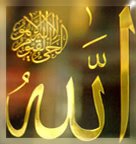Introducing the Qur'an's Literary Excellence, Part 3
The utilisation of sounds in the Qur'an also play a rhetorical role. For example in the verse below the Qur'an uses words that imitate the sound they denote. This rhetorical device called onomatopoeia is widely used throughout the Qur'anic discourse,
"At length when there is a deafening noise" [Qur'an 80: 33]
Fa-itha jaati alssakhkhatu
The word for 'deafening noise', 'alssakhkhatu,' chosen here produces a sound eluding to its meaning. The Arabic letters 'kha' and 'ta' emanate harsh sounds which conform to the meaning of the text.
Sounds in the Qur'an are employed to increase the effect of its message.The Arabic language has many words for a single meaning, but yet the Qur'an selects and arranges the words to portray the intended meaning in addition to create sounds to conform to the image, scene and message the book conveys. This is not only done by selecting the right words but also arranging them in a specific way to develop sounds and rhythms. Just by touching upon a few simple examples it can be seen why Pickthall was lead to believe that the Qur'an had an "inimitable symphony". Arberry on his personal experience with the rhythm of the Qur'an:,
"Whenever I hear the Quran chanted, it is as though I am listening to Music, underneath the flowing melody there is sounding… insistent beat of a drum, it is like the beating of my heart."
Unique Genre
"As a literary monument the Koran thus stands by itself, a production unique to the Arabic literature, having neither forerunners nor successors in its own idiom. Muslims of all ages are united in proclaiming the inimitability not only of its contents but also of its style… and in forcing the High Arabic idiom into the expression of new ranges of thought the Koran develops a bold and strikingly effective rhetorical prose in which all the resources of syntactical modulation are exploited with great freedom and originality."
This statement coming from the famous Arab grammarian H. Gibb, is an apt description of the Qur'anic style, but this genre is not simply a subjective conclusion, it is a reality based upon the use of features that are abundant in all languages. This may seem strange that the Qur'an has developed its own style by using current literary elements. However, it should be noted that the Qur'anic discourse uses these common elements of language in a way that has never been used before. Penrice acknowledges the Qur'an's literary excellence:
"That a competent knowledge of the Koran is indispensable as an introduction to the study of Arabic literature will be admitted by all who have advanced beyond the rudiments of the language. From the purity of its style and elegance of its diction it has come to be considered as the standard of Arabic…"
The Qur'an is an independent genre in its own right. Its unique style is realised through two inseparable elements; rhetorical and cohesive elements. From a linguistic point of view rhetoric can be defined as the use of language to please or persuade. Cohesiveness is the feature that binds sentences to each other grammatically and lexically. It also refers to how words are linked together into sentences and how sentences are in turn linked together to form larger units in texts.
These elements combine with each other in such a way that interlock and become inseparable. This unique combination captivates the reader and achieves an effective communicative goal. The rhetorical and cohesive components of the Qur'anic text cannot be divorced from each other. If the Qur'anic text were stripped of these elements, the remaining text would cease to be the Qur'an and neither would it not sound like the Qur'an. Arbuthnot states:
"…the Koran is regarded as a specimen of the purest Arabic, written in half poetry and half prose. It has been said that in some cases grammarians have adopted their rules to agree with certain phrases and expressions used in it, and that though several attempts have been made to produce a work equal to it as far as elegant writing is concerned, none has as yet succeeded."
From a linguistic point of view the Qur'an employs various rhetorical features such as the use of rhythm, figures of speech, similes, metaphors, and rhetorical questions. Also, the use of irony and the repetition of words are a just a small part of the Qur'an's repertoire of rhetorical devices. Its cohesiveness includes various methods such as parallel structures, phrasal ties, substitution, reference and lexical cohesion.These features provide the bedrock and hang together to create the Qur'an's unique style.
Non-Qur'anic Arabic texts mostly employ cohesive elements but the Qur'an uses both cohesive and rhetorical elements in every verse. The following is a good example to highlight the uniqueness of the Qur'anic style:
"Men who remember Allah much and women who remember" [Qur'an 33: 35]
Al-dhalikirin Allaha kathiran wa'l-dhakirati
The Qur'anic verse above, in a different word order such as the verse below,
"Men who remember Allah much and Women who remember Allah much"
al-dhakirina Allaha kathiran wa'l-dhakirati Allaha kathiran
"At length when there is a deafening noise" [Qur'an 80: 33]
Fa-itha jaati alssakhkhatu
The word for 'deafening noise', 'alssakhkhatu,
Sounds in the Qur'an are employed to increase the effect of its message.The Arabic language has many words for a single meaning, but yet the Qur'an selects and arranges the words to portray the intended meaning in addition to create sounds to conform to the image, scene and message the book conveys. This is not only done by selecting the right words but also arranging them in a specific way to develop sounds and rhythms. Just by touching upon a few simple examples it can be seen why Pickthall was lead to believe that the Qur'an had an "inimitable symphony". Arberry on his personal experience with the rhythm of the Qur'an:,
"Whenever I hear the Quran chanted, it is as though I am listening to Music, underneath the flowing melody there is sounding… insistent beat of a drum, it is like the beating of my heart."
Unique Genre
"As a literary monument the Koran thus stands by itself, a production unique to the Arabic literature, having neither forerunners nor successors in its own idiom. Muslims of all ages are united in proclaiming the inimitability not only of its contents but also of its style… and in forcing the High Arabic idiom into the expression of new ranges of thought the Koran develops a bold and strikingly effective rhetorical prose in which all the resources of syntactical modulation are exploited with great freedom and originality.
This statement coming from the famous Arab grammarian H. Gibb, is an apt description of the Qur'anic style, but this genre is not simply a subjective conclusion, it is a reality based upon the use of features that are abundant in all languages. This may seem strange that the Qur'an has developed its own style by using current literary elements. However, it should be noted that the Qur'anic discourse uses these common elements of language in a way that has never been used before. Penrice acknowledges the Qur'an's literary excellence:
"That a competent knowledge of the Koran is indispensable as an introduction to the study of Arabic literature will be admitted by all who have advanced beyond the rudiments of the language. From the purity of its style and elegance of its diction it has come to be considered as the standard of Arabic…"
The Qur'an is an independent genre in its own right. Its unique style is realised through two inseparable elements; rhetorical and cohesive elements. From a linguistic point of view rhetoric can be defined as the use of language to please or persuade. Cohesiveness is the feature that binds sentences to each other grammatically and lexically. It also refers to how words are linked together into sentences and how sentences are in turn linked together to form larger units in texts.
These elements combine with each other in such a way that interlock and become inseparable. This unique combination captivates the reader and achieves an effective communicative goal. The rhetorical and cohesive components of the Qur'anic text cannot be divorced from each other. If the Qur'anic text were stripped of these elements, the remaining text would cease to be the Qur'an and neither would it not sound like the Qur'an. Arbuthnot states:
"…the Koran is regarded as a specimen of the purest Arabic, written in half poetry and half prose. It has been said that in some cases grammarians have adopted their rules to agree with certain phrases and expressions used in it, and that though several attempts have been made to produce a work equal to it as far as elegant writing is concerned, none has as yet succeeded."
From a linguistic point of view the Qur'an employs various rhetorical features such as the use of rhythm, figures of speech, similes, metaphors, and rhetorical questions. Also, the use of irony and the repetition of words are a just a small part of the Qur'an's repertoire of rhetorical devices. Its cohesiveness includes various methods such as parallel structures, phrasal ties, substitution, reference and lexical cohesion.These features provide the bedrock and hang together to create the Qur'an's unique style.
Non-Qur'anic Arabic texts mostly employ cohesive elements but the Qur'an uses both cohesive and rhetorical elements in every verse. The following is a good example to highlight the uniqueness of the Qur'anic style:
"Men who remember Allah much and women who remember" [Qur'an 33: 35]
Al-dhalikirin Allaha kathiran wa'l-dhakirati
The Qur'anic verse above, in a different word order such as the verse below,
"Men who remember Allah much and Women who remember Allah much"
al-dhakirina Allaha kathiran wa'l-dhakirati Allaha kathiran
.
__,_._,___





No comments:
Post a Comment